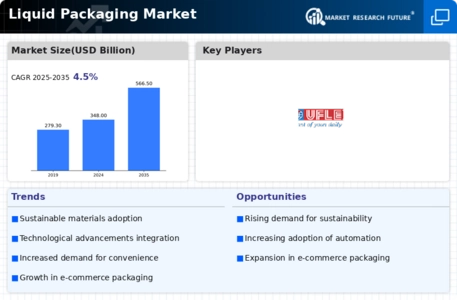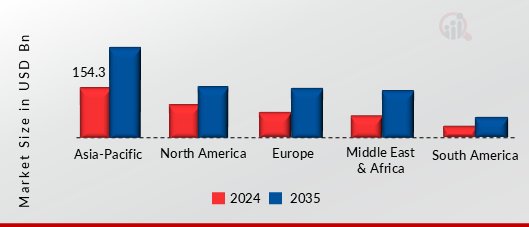-
EXECUTIVE SUMMARY
-
MARKET INTRODUCTION
-
2.1
-
DEFINITION
-
SCOPE OF THE STUDY
-
RESEARCH OBJECTIVE
-
MARKET
-
STRUCTURE
-
RESEARCH METHODOLOGY
-
OVERVIEW
-
DATA FLOW
-
3.2.1
-
DATA MINING PROCESS
-
PURCHASED DATABASE:
-
SECONDARY SOURCES:
- SECONDARY RESEARCH DATA FLOW:
-
PRIMARY RESEARCH:
- PRIMARY
- PRIMARY RESEARCH: NUMBER OF INTERVIEWS CONDUCTED
- PRIMARY RESEARCH: REGIONAL COVERAGE
-
RESEARCH DATA FLOW:
-
APPROACHES FOR MARKET SIZE
- REVENUE ANALYSIS APPROACH
-
ESTIMATION:
-
DATA FORECASTING
-
3.7.1
-
DATA FORECASTING TECHNIQUE
-
DATA MODELING
- MICROECONOMIC FACTOR
- DATA MODELING:
-
ANALYSIS:
-
TEAMS AND ANALYST CONTRIBUTION
-
4
-
MARKET DYNAMICS
-
INTRODUCTION
-
DRIVERS
- RISING DEMAND
- ADVANCEMENTS IN PACKAGING TECHNOLOGIES
-
FOR PACKAGED BEVERAGES
-
4.2.3
-
DRIVERS IMPACT ANALYSIS
-
RESTRAINT
- ENVIRONMENTAL CONCERNS AND
- RESTRAINT IMPACT ANALYSIS
-
REGULATORY RESTRICTIONS
-
OPPORTUNITY
- RISING DEMAND FOR SUSTAINABLE AND ECO-FRIENDLY PACKAGING
-
COVID-19
-
IMPACT ANALYSIS
-
IMPACT
-
OF KEY RAW MATERIALS
-
4.5.3.1
-
IMPACT DUE TO RESTRICTIONS/LOCKDOWN
-
4.5.4
-
IMPACT ON PRICING
-
IMPACT ON OVERALL PACKAGING INDUSTRY
-
ECONOMIC
-
IMPACT ON SUPPLY CHAIN
-
IMPACT ON PRICE VARIATION
-
PRODUCTION SHUTDOWN
-
CASH FLOW CONSTRAINTS
-
IMPACT ON IMPORT/EXPORT
-
IMPACT ON MARKET DEMAND
-
CONSUMER SENTIMENTS
-
MARKET FACTOR ANALYSIS
-
SUPPLY CHAIN ANALYSIS
- RAW COMPONENT/MATERIAL SUPPLY
- MANUFACTURE
- DISTRIBUTION
- END-USE
-
PORTER’S FIVE FORCES MODEL
- THREAT OF NEW
- BARGAINING POWER OF SUPPLIERS
- THREAT OF SUBSTITUTES
- BARGAINING POWER OF BUYERS
- INTENSITY OF RIVALRY
-
ENTRANTS
-
GLOBAL
-
LIQUID PACKAGING MARKET, BY PACKAGING TYPE
-
INTRODUCTION
-
FLEXIBLE
-
LIQUID PACKAGING
-
RIGID LIQUID PACKAGING
-
GLOBAL LIQUID PACKAGING
-
MARKET, BY MATERIAL TYPE
-
INTRODUCTION
-
PAPERBOARD
-
PLASTIC
-
GLASS
-
METAL
-
GLOBAL LIQUID PACKAGING MARKET, BY END-USE
-
INTRODUCTION
-
BEVERAGE
-
PERSONAL CARE AND COSMETICS
-
8.4
-
PHARMACEUTICALS
-
HOUSEHOLD
-
INDUSTRIAL
-
GLOBAL LIQUID PACKAGING
-
MARKET, BY REGION
-
OVERVIEW
-
NORTH AMERICA
- US
- MEXICO
-
9.2.2
-
CANADA
-
EUROPE
- GERMANY
- FRANCE
- RUSSIA
- ITALY
- SPAIN
- REST OF EUROPE
- CHINA
- INDIA
- JAPAN
- SOUTH
- MALAYSIA
- THAILAND
- INDONESIA
- REST
-
9.4
-
ASIA-PACIFIC
-
KOREA
-
OF ASIA-PACIFIC
-
MIDDLE EAST & AFRICA (MEA)
- GCC COUNTRIES
- SOUTH AFRICA
- REST OF MEA
-
SOUTH AMERICA
- BRAZIL
- ARGENTINA
- REST OF SOUTH AMERICA
-
COMPETITIVE LANDSCAPE
-
INTRODUCTION
-
MARKET SHARE ANALYSIS, 2024
-
COMPETITOR DASHBOARD
-
KEY DEVELOPMENTS & GROWTH STRATEGIES
- PRODUCT LAUNCH
-
10.4.2
-
ACQUISITION
-
COMPANY PROFILES
-
AMCOR PLC
- COMPANY OVERVIEW
- FINANCIAL OVERVIEW
- PRODUCTS OFFERED
- KEY DEVELOPMENTS
- SWOT ANALYSIS
- KEY STRATEGY
-
SEALED AIR CORPORATION
- COMPANY OVERVIEW
- FINANCIAL OVERVIEW
- PRODUCTS OFFERED
- KEY DEVELOPMENTS
- SWOT ANALYSIS
- KEY STRATEGIES
-
MONDI PLC
- COMPANY OVERVIEW
- FINANCIAL OVERVIEW
- PRODUCTS OFFERED
- KEY DEVELOPMENTS
- SWOT ANALYSIS
- KEY STRATEGIES
-
UFLEX LIMITED
- COMPANY OVERVIEW
- FINANCIAL OVERVIEW
- PRODUCTS OFFERED
- KEY DEVELOPMENTS
- SWOT ANALYSIS
- KEY STRATEGIES
-
BERRY GLOBAL GROUP,
- COMPANY OVERVIEW
- FINANCIAL OVERVIEW
- PRODUCTS
- KEY DEVELOPMENTS
- SWOT ANALYSIS
- KEY STRATEGIES
-
INC.
-
OFFERED
-
INTERNATIONAL PAPER COMPANY
- COMPANY OVERVIEW
- FINANCIAL
- PRODUCTS OFFERED
- KEY DEVELOPMENTS
- SWOT
- KEY STRATEGIES
-
OVERVIEW
-
ANALYSIS
-
TETRA PAK INTERNATIONAL S.A.
- PRODUCTS OFFERED
- KEY DEVELOPMENTS
-
11.7.1
-
COMPANY OVERVIEW
-
11.7.4
-
SWOT ANALYSIS
-
WESTROCK
-
11.8.3
-
PRODUCTS OFFERED
-
11.8.6
-
KEY STRATEGIES
-
OFFERED
-
OFFERED
-
STRATEGIES
-
\r\nLIST OF TABLES
-
KEY STRATEGIES
-
SMURFIT KAPPA GROUP / SMURFIT
- COMPANY OVERVIEW
- FINANCIAL OVERVIEW
- KEY DEVELOPMENTS
- SWOT ANALYSIS
-
DS SMITH PLC
- COMPANY OVERVIEW
- PRODUCTS
- KEY DEVELOPMENTS
- SWOT ANALYSIS
- KEY STRATEGIES
-
SIG COMBIBLOC GROUP AG
- COMPANY OVERVIEW
- PRODUCTS
- KEY DEVELOPMENTS
- SWOT ANALYSIS
- KEY
-
QFD MODELING FOR MARKET SHARE ASSESSMENT
-
GLOBAL LIQUID PACKAGING MARKET, BY PACKAGING TYPE, 2019-2035 (USD BILLION)
-
GLOBAL LIQUID PACKAGING MARKET, BY RIGID LIQUID PACKAGING, 2019-2035 (USD
-
BILLION)
-
GLOBAL LIQUID PACKAGING MARKET, BY MATERIAL TYPE, 2019-2035
-
(USD BILLION)
-
GLOBAL LIQUID PACKAGING MARKET, BY END-USE, 2019-2035
-
(USD BILLION)
-
GLOBAL LIQUID PACKAGING MARKET, BY REGION, 2019-2035
-
(USD BILLION)
-
NORTH AMERICA: LIQUID PACKAGING MARKET, BY COUNTRY, 2019-2035
-
(USD BILLION)
-
NORTH AMERICA: LIQUID PACKAGING MARKET, BY PACKAGING
-
TYPE, 2019-2035 (USD BILLION)
-
NORTH AMERICA: LIQUID PACKAGING MARKET,
-
BY RIGID LIQUID PACKAGING, 2019-2035 (USD BILLION)
-
NORTH AMERICA:
-
LIQUID PACKAGING MARKET, BY MATERIAL TYPE, 2019-2035 (USD BILLION)
-
TABLE 11
-
NORTH AMERICA: LIQUID PACKAGING MARKET, BY END-USE, 2019-2035 (USD BILLION)
-
TABLE
-
US: LIQUID PACKAGING MARKET, BY PACKAGING TYPE, 2019-2035 (USD BILLION)
-
TABLE
-
US: LIQUID PACKAGING MARKET, BY RIGID LIQUID PACKAGING, 2019-2035 (USD BILLION)
-
US: LIQUID PACKAGING MARKET, BY MATERIAL TYPE, 2019-2035 (USD BILLION)
-
US: LIQUID PACKAGING MARKET, BY END-USE, 2019-2035 (USD BILLION)
-
TABLE
-
CANADA: LIQUID PACKAGING MARKET, BY PACKAGING TYPE, 2019-2035 (USD BILLION)
-
CANADA: LIQUID PACKAGING MARKET, BY RIGID LIQUID PACKAGING, 2019-2035
-
(USD BILLION)
-
CANADA: LIQUID PACKAGING MARKET, BY MATERIAL TYPE, 2019-2035
-
(USD BILLION)
-
CANADA: LIQUID PACKAGING MARKET, BY END-USE, 2019-2035
-
(USD BILLION)
-
MEXICO: LIQUID PACKAGING MARKET, BY PACKAGING TYPE,
-
MEXICO: LIQUID PACKAGING MARKET, BY RIGID
-
LIQUID PACKAGING, 2019-2035 (USD BILLION)
-
MEXICO: LIQUID PACKAGING
-
MARKET, BY MATERIAL TYPE, 2019-2035 (USD BILLION)
-
MEXICO: LIQUID PACKAGING
-
MARKET, BY END-USE, 2019-2035 (USD BILLION)
-
EUROPE: LIQUID PACKAGING
-
MARKET, BY COUNTRY, 2019-2035 (USD BILLION)
-
EUROPE: LIQUID PACKAGING
-
MARKET, BY PACKAGING TYPE, 2019-2035 (USD BILLION)
-
EUROPE: LIQUID
-
PACKAGING MARKET, BY RIGID LIQUID PACKAGING, 2019-2035 (USD BILLION)
-
TABLE
-
EUROPE: LIQUID PACKAGING MARKET, BY MATERIAL TYPE, 2019-2035 (USD BILLION)
-
EUROPE: LIQUID PACKAGING MARKET, BY END-USE, 2019-2035 (USD BILLION)
-
GERMANY: LIQUID PACKAGING MARKET, BY PACKAGING TYPE, 2019-2035 (USD BILLION)
-
GERMANY: LIQUID PACKAGING MARKET, BY RIGID LIQUID PACKAGING, 2019-2035
-
(USD BILLION)
-
GERMANY: LIQUID PACKAGING MARKET, BY MATERIAL TYPE,
-
GERMANY: LIQUID PACKAGING MARKET, BY END-USE,
-
FRANCE: LIQUID PACKAGING MARKET, BY PACKAGING
-
TYPE, 2019-2035 (USD BILLION)
-
FRANCE: LIQUID PACKAGING MARKET, BY
-
RIGID LIQUID PACKAGING, 2019-2035 (USD BILLION)
-
FRANCE: LIQUID PACKAGING
-
MARKET, BY MATERIAL TYPE, 2019-2035 (USD BILLION)
-
FRANCE: LIQUID PACKAGING
-
MARKET, BY END-USE, 2019-2035 (USD BILLION)
-
RUSSIA: LIQUID PACKAGING
-
MARKET, BY PACKAGING TYPE, 2019-2035 (USD BILLION)
-
RUSSIA: LIQUID
-
PACKAGING MARKET, BY RIGID LIQUID PACKAGING, 2019-2035 (USD BILLION)
-
TABLE
-
RUSSIA: LIQUID PACKAGING MARKET, BY MATERIAL TYPE, 2019-2035 (USD BILLION)
-
RUSSIA: LIQUID PACKAGING MARKET, BY END-USE, 2019-2035 (USD BILLION)
-
ITALY: LIQUID PACKAGING MARKET, BY PACKAGING TYPE, 2019-2035 (USD BILLION)
-
ITALY: LIQUID PACKAGING MARKET, BY RIGID LIQUID PACKAGING, 2019-2035
-
(USD BILLION)
-
ITALY: LIQUID PACKAGING MARKET, BY MATERIAL TYPE, 2019-2035
-
(USD BILLION)
-
ITALY: LIQUID PACKAGING MARKET, BY END-USE, 2019-2035
-
(USD BILLION)
-
SPAIN: LIQUID PACKAGING MARKET, BY PACKAGING TYPE, 2019-2035
-
(USD BILLION)
-
SPAIN: LIQUID PACKAGING MARKET, BY RIGID LIQUID PACKAGING,
-
SPAIN: LIQUID PACKAGING MARKET, BY MATERIAL
-
TYPE, 2019-2035 (USD BILLION)
-
SPAIN: LIQUID PACKAGING MARKET, BY END-USE,
-
REST OF EUROPE: LIQUID PACKAGING MARKET, BY
-
PACKAGING TYPE, 2019-2035 (USD BILLION)
-
REST OF EUROPE: LIQUID PACKAGING
-
MARKET, BY RIGID LIQUID PACKAGING, 2019-2035 (USD BILLION)
-
REST OF
-
EUROPE: LIQUID PACKAGING MARKET, BY MATERIAL TYPE, 2019-2035 (USD BILLION)
-
TABLE
-
REST OF EUROPE: LIQUID PACKAGING MARKET, BY END-USE, 2019-2035 (USD BILLION)
-
ASIA-PACIFIC: LIQUID PACKAGING MARKET, BY COUNTRY, 2019-2035 (USD BILLION)
-
ASIA-PACIFIC: LIQUID PACKAGING MARKET, BY PACKAGING TYPE, 2019-2035 (USD
-
BILLION)
-
ASIA-PACIFIC: LIQUID PACKAGING MARKET, BY RIGID LIQUID PACKAGING,
-
ASIA-PACIFIC: LIQUID PACKAGING MARKET, BY
-
MATERIAL TYPE, 2019-2035 (USD BILLION)
-
ASIA-PACIFIC: LIQUID PACKAGING
-
MARKET, BY END-USE, 2019-2035 (USD BILLION)
-
CHINA: LIQUID PACKAGING
-
MARKET, BY PACKAGING TYPE, 2019-2035 (USD BILLION)
-
CHINA: LIQUID PACKAGING
-
MARKET, BY RIGID LIQUID PACKAGING, 2019-2035 (USD BILLION)
-
CHINA:
-
LIQUID PACKAGING MARKET, BY MATERIAL TYPE, 2019-2035 (USD BILLION)
-
TABLE 61
-
CHINA: LIQUID PACKAGING MARKET, BY END-USE, 2019-2035 (USD BILLION)
-
TABLE 62
-
INDIA: LIQUID PACKAGING MARKET, BY PACKAGING TYPE, 2019-2035 (USD BILLION)
-
TABLE
-
INDIA: LIQUID PACKAGING MARKET, BY RIGID LIQUID PACKAGING, 2019-2035 (USD BILLION)
-
INDIA: LIQUID PACKAGING MARKET, BY MATERIAL TYPE, 2019-2035 (USD BILLION)
-
INDIA: LIQUID PACKAGING MARKET, BY END-USE, 2019-2035 (USD BILLION)
-
JAPAN: LIQUID PACKAGING MARKET, BY PACKAGING TYPE, 2019-2035 (USD BILLION)
-
JAPAN: LIQUID PACKAGING MARKET, BY RIGID LIQUID PACKAGING, 2019-2035
-
(USD BILLION)
-
JAPAN: LIQUID PACKAGING MARKET, BY MATERIAL TYPE, 2019-2035
-
(USD BILLION)
-
JAPAN: LIQUID PACKAGING MARKET, BY END-USE, 2019-2035
-
(USD BILLION)
-
SOUTH KOREA: LIQUID PACKAGING MARKET, BY PACKAGING TYPE,
-
SOUTH KOREA: LIQUID PACKAGING MARKET, BY RIGID
-
LIQUID PACKAGING, 2019-2035 (USD BILLION)
-
SOUTH KOREA: LIQUID PACKAGING
-
MARKET, BY MATERIAL TYPE, 2019-2035 (USD BILLION)
-
SOUTH KOREA: LIQUID
-
PACKAGING MARKET, BY END-USE, 2019-2035 (USD BILLION)
-
MALAYSIA: LIQUID
-
PACKAGING MARKET, BY PACKAGING TYPE, 2019-2035 (USD BILLION)
-
MALAYSIA:
-
LIQUID PACKAGING MARKET, BY RIGID LIQUID PACKAGING, 2019-2035 (USD BILLION)
-
TABLE
-
MALAYSIA: LIQUID PACKAGING MARKET, BY MATERIAL TYPE, 2019-2035 (USD BILLION)
-
MALAYSIA: LIQUID PACKAGING MARKET, BY END-USE, 2019-2035 (USD BILLION)
-
THAILAND: LIQUID PACKAGING MARKET, BY PACKAGING TYPE, 2019-2035 (USD
-
BILLION)
-
THAILAND: LIQUID PACKAGING MARKET, BY RIGID LIQUID PACKAGING,
-
THAILAND: LIQUID PACKAGING MARKET, BY MATERIAL
-
TYPE, 2019-2035 (USD BILLION)
-
THAILAND: LIQUID PACKAGING MARKET, BY
-
END-USE, 2019-2035 (USD BILLION)
-
INDONESIA: LIQUID PACKAGING MARKET,
-
BY PACKAGING TYPE, 2019-2035 (USD BILLION)
-
INDONESIA: LIQUID PACKAGING
-
MARKET, BY RIGID LIQUID PACKAGING, 2019-2035 (USD BILLION)
-
INDONESIA:
-
LIQUID PACKAGING MARKET, BY MATERIAL TYPE, 2019-2035 (USD BILLION)
-
TABLE 85
-
INDONESIA: LIQUID PACKAGING MARKET, BY END-USE, 2019-2035 (USD BILLION)
-
TABLE
-
REST OF ASIA-PACIFIC: LIQUID PACKAGING MARKET, BY PACKAGING TYPE, 2019-2035 (USD
-
BILLION)
-
REST OF ASIA-PACIFIC: LIQUID PACKAGING MARKET, BY RIGID LIQUID
-
PACKAGING, 2019-2035 (USD BILLION)
-
REST OF ASIA-PACIFIC: LIQUID PACKAGING
-
MARKET, BY MATERIAL TYPE, 2019-2035 (USD BILLION)
-
REST OF ASIA-PACIFIC:
-
LIQUID PACKAGING MARKET, BY END-USE, 2019-2035 (USD BILLION)
-
MEA:
-
LIQUID PACKAGING MARKET, BY COUNTRY, 2019-2035 (USD BILLION)
-
MEA:
-
LIQUID PACKAGING MARKET, BY PACKAGING TYPE, 2019-2035 (USD BILLION)
-
TABLE 92
-
MEA: LIQUID PACKAGING MARKET, BY RIGID LIQUID PACKAGING, 2019-2035 (USD BILLION)
-
MEA: LIQUID PACKAGING MARKET, BY MATERIAL TYPE, 2019-2035 (USD BILLION)
-
MEA: LIQUID PACKAGING MARKET, BY END-USE, 2019-2035 (USD BILLION)
-
GCC COUNTRIES: LIQUID PACKAGING MARKET, BY PACKAGING TYPE, 2019-2035
-
(USD BILLION)
-
GCC COUNTRIES: LIQUID PACKAGING MARKET, BY RIGID LIQUID
-
PACKAGING, 2019-2035 (USD BILLION)
-
GCC COUNTRIES: LIQUID PACKAGING
-
MARKET, BY MATERIAL TYPE, 2019-2035 (USD BILLION)
-
GCC COUNTRIES: LIQUID
-
PACKAGING MARKET, BY END-USE, 2019-2035 (USD BILLION)
-
SOUTH AFRICA:
-
LIQUID PACKAGING MARKET, BY PACKAGING TYPE, 2019-2035 (USD BILLION)
-
TABLE 100
-
SOUTH AFRICA: LIQUID PACKAGING MARKET, BY RIGID LIQUID PACKAGING, 2019-2035 (USD
-
BILLION)
-
SOUTH AFRICA: LIQUID PACKAGING MARKET, BY MATERIAL TYPE,
-
SOUTH AFRICA: LIQUID PACKAGING MARKET, BY
-
END-USE, 2019-2035 (USD BILLION)
-
REST OF MEA: LIQUID PACKAGING MARKET,
-
BY PACKAGING TYPE, 2019-2035 (USD BILLION)
-
REST OF MEA: LIQUID PACKAGING
-
MARKET, BY RIGID LIQUID PACKAGING, 2019-2035 (USD BILLION)
-
REST OF
-
MEA: LIQUID PACKAGING MARKET, BY MATERIAL TYPE, 2019-2035 (USD BILLION)
-
TABLE
-
REST OF MEA: LIQUID PACKAGING MARKET, BY END-USE, 2019-2035 (USD BILLION)
-
SOUTH AMERICA: LIQUID PACKAGING MARKET, BY COUNTRY, 2019-2035 (USD BILLION)
-
SOUTH AMERICA: LIQUID PACKAGING MARKET, BY PACKAGING TYPE, 2019-2035
-
(USD BILLION)
-
SOUTH AMERICA: LIQUID PACKAGING MARKET, BY RIGID LIQUID
-
PACKAGING, 2019-2035 (USD BILLION)
-
SOUTH AMERICA: LIQUID PACKAGING
-
MARKET, BY MATERIAL TYPE, 2019-2035 (USD BILLION)
-
SOUTH AMERICA:
-
LIQUID PACKAGING MARKET, BY END-USE, 2019-2035 (USD BILLION)
-
BRAZIL:
-
LIQUID PACKAGING MARKET, BY PACKAGING TYPE, 2019-2035 (USD BILLION)
-
TABLE 113
-
BRAZIL: LIQUID PACKAGING MARKET, BY RIGID LIQUID PACKAGING, 2019-2035 (USD BILLION)
-
BRAZIL: LIQUID PACKAGING MARKET, BY MATERIAL TYPE, 2019-2035 (USD BILLION)
-
BRAZIL: LIQUID PACKAGING MARKET, BY END-USE, 2019-2035 (USD BILLION)
-
ARGENTINA: LIQUID PACKAGING MARKET, BY PACKAGING TYPE, 2019-2035 (USD
-
BILLION)
-
ARGENTINA: LIQUID PACKAGING MARKET, BY RIGID LIQUID PACKAGING,
-
ARGENTINA: LIQUID PACKAGING MARKET, BY MATERIAL
-
TYPE, 2019-2035 (USD BILLION)
-
ARGENTINA: LIQUID PACKAGING MARKET,
-
BY END-USE, 2019-2035 (USD BILLION)
-
REST OF SOUTH AMERICA: LIQUID
-
PACKAGING MARKET, BY PACKAGING TYPE, 2019-2035 (USD BILLION)
-
REST
-
OF SOUTH AMERICA: LIQUID PACKAGING MARKET, BY RIGID LIQUID PACKAGING, 2019-2035
-
(USD BILLION)
-
REST OF SOUTH AMERICA: LIQUID PACKAGING MARKET, BY
-
MATERIAL TYPE, 2019-2035 (USD BILLION)
-
REST OF SOUTH AMERICA: LIQUID
-
PACKAGING MARKET, BY END-USE, 2019-2035 (USD BILLION)
-
PRODUCT LAUNCH
-
ACQUISITION
-
AMCOR PLC: PRODUCTS OFFERED
-
TABLE 127
-
AMCOR PLC: KEY DEVELOPMENTS
-
SEALED AIR: PRODUCTS OFFERED
-
TABLE
-
SEALED AIR: KEY DEVELOPMENT
-
MONDI: PRODUCTS OFFERED
-
TABLE
-
MONDI: KEY DEVELOPMENTS
-
UFLEX LIMITED: PRODUCTS OFFERED
-
TABLE
-
UFLEX LIMITED: KEY DEVELOPMENTS
-
BERRY GLOBAL GROUP, INC.: PRODUCTS
-
OFFERED
-
BERRY GLOBAL GROUP, INC.: KEY DEVELOPMENTS
-
TABLE 136
-
INTERNATIONAL PAPER: PRODUCTS OFFERED
-
INTERNATIONAL PAPER: KEY DEVELOPMENTS
-
TETRA PAK INTERNATIONAL S.A.: PRODUCTS OFFERED
-
TETRA
-
PAK INTERNATIONAL S.A: KEY DEVELOPMENTS
-
SMURFIT KAPPA GROUP / SMURFIT
-
WESTROCK: PRODUCTS OFFERED
-
SMURFIT KAPPA GROUP / SMURFIT WESTROCK:
-
KEY DEVELOPMENTS
-
DS SMITH: PRODUCTS OFFERED
-
DS SMITH:
-
KEY DEVELOPMENTS
-
SIG COMBIBLOC GROUP AG: PRODUCTS OFFERED
-
TABLE
-
SIG COMBIBLOC GROUP AG: KEY DEVELOPMENTS
-
\r\nLIST OF FIGURES
-
FIGURE
-
GLOBAL LIQUID PACKAGING MARKET: STRUCTURE
-
MARKET DYNAMICS: GLOBAL
-
LIQUID PACKAGING MARKET
-
DRIVERS: IMPACT ANALYSIS: GLOBAL LIQUID PACKAGING
-
MARKET
-
RESTRAINT IMPACT ANALYSIS: GLOBAL LIQUID PACKAGING MARKET
-
SUPPLY CHAIN ANALYSIS: GLOBAL LIQUID PACKAGING MARKET
-
PORTER’S
-
FIVE FORCES ANALYSIS: GLOBAL LIQUID PACKAGING MARKET
-
GLOBAL LIQUID
-
PACKAGING MARKET, BY PACKAGING TYPE, 2024 (% SHARE)
-
GLOBAL LIQUID
-
PACKAGING MARKET, BY MATERIAL TYPE, 2024 (% SHARE)
-
GLOBAL LIQUID PACKAGING
-
MARKET, BY END-USE, 2024 (% SHARE)
-
GLOBAL LIQUID PACKAGING MARKET,
-
BY REGION, 2024 (% SHARE)
-
GLOBAL LIQUID PACKAGING PLAYERS: COMPETITIVE
-
ANALSIS, 2024
-
COMPETITOR DASHBOARD: GLOBAL LIQUID PACKAGING
-
FIGURE
-
AMCOR PLC: FINANCIAL SNAPSHOT
-
AMCOR PLC: SWOT ANALYSIS
-
FIGURE
-
SEALED AIR: FINANCIAL OVERVIEW SNAPSHOT
-
SEALED AIR: SWOT ANALYSIS
-
MONDI: FINANCIAL OVERVIEW SNAPSHOT
-
MONDI: SWOT ANALYSIS
-
UFLEX LIMITED: FINANCIAL OVERVIEW SNAPSHOT
-
UFLEX LIMITED:
-
SWOT ANALYSIS
-
BERRY GLOBAL GROUP, INC.: FINANCIAL SNAPSHOT
-
FIGURE
-
BERRY GLOBAL GROUP, INC.: SWOT ANALYSIS
-
INTERNATIONAL PAPER: FINANCIAL
-
OVERVIEW SNAPSHOT
-
INTERNATIONAL PAPER: SWOT ANALYSIS
-
FIGURE
-
TETRA PAK INTERNATIONAL S.A: SWOT ANALYSIS
-
SMURFIT KAPPA GROUP
-
/ SMURFIT WESTROCK: FINANCIAL OVERVIEW SNAPSHOT
-
INTERNATIONAL PAPER:
-
SWOT ANALYSIS
-
DS SMITH: SWOT ANALYSIS
-
DS SMITH: SWOT
-
ANALYSIS
-
\r\n
-
\r\n





Leave a Comment